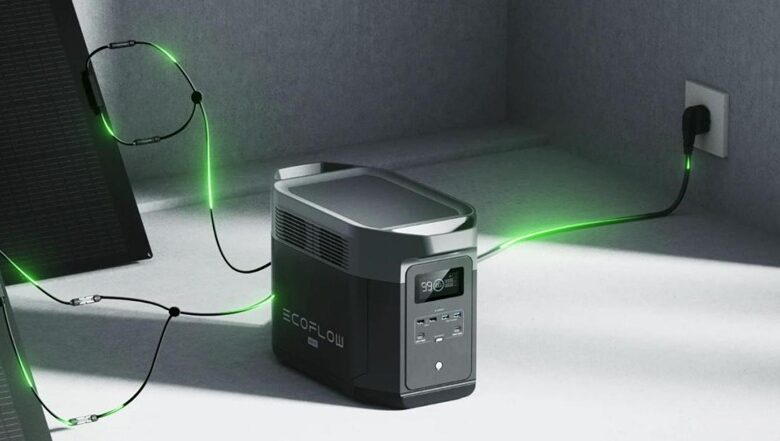How to Choose the Right EcoFlow Model for Your Energy Needs

Choosing the right EcoFlow model for your energy requirements can seem daunting with the variety of options available. Whether you need reliable power for outdoor adventures, emergency home backup, or off-grid living, there is an EcoFlow portable power station for you. This guide will help you understand your energy needs and explore key features and models, empowering you to make an informed decision.
Understanding Your Energy Requirements
Assessing Your Daily Energy Consumption
Begin by evaluating your daily energy usage. List all the devices you plan to power, such as smartphones, laptops, refrigerators, and medical equipment. Estimate the watt-hours (Wh) each device consumes to understand your total energy requirement. For instance, a smartphone may use around 5-7 Wh per charge, while a laptop could require 50-100 Wh.
Considering Appliances and Power Needs
Identify the appliances and their power needs in terms of wattage and runtime. This step is crucial, as high-wattage devices like power tools and refrigerators will significantly influence your choice of power station. Ensure you consider both continuous and peak power requirements, especially for devices with starting surges.
Identifying Key Factors for Model Selection
Factors such as battery capacity, recharge time, weight, and output port variety play a crucial role in selecting the right model. Assess the environment (indoor or outdoor) where the power station will be used. Make a note of special requirements like solar panel compatibility if you prefer renewable energy solutions.
Key Features to Look for in an EcoFlow Power Station
Battery Capacity and Runtime
Battery capacity, measured in watt-hours (Wh), determines how long a power station can run your devices. Higher capacity models are ideal for extended usage, while lower capacity units are fit for short-term or occasional use. Understand your cumulative energy consumption to choose an appropriate battery size.
Output Options (AC, DC, USB)
Consider the variety of output ports offered by the power station. Ensure it caters to your specific needs with a mix of AC outlets for home appliances, DC outlets often used in automotive settings, and USB ports for charging smaller electronics. A versatile unit with multiple ports will serve a broader range of devices.
Portability and Weight
Evaluate the portability aspects, including the weight and design of the power station. Compact and lightweight models are easier to carry during outdoor activities, while heavier units may suit stationary use for home backup. Balance portability with capacity to meet your mobility versus power needs.
Charging Time and Solar Compatibility
Examine the charging options available, including standard AC outlets, car chargers, and solar panels. Faster charging times offer convenience, but solar compatibility adds the benefit of renewable energy, particularly for off-grid situations. Look for models with efficient solar input for extended usage without a traditional power source.
Comparing EcoFlow Models: Which One Is Right for You?
EcoFlow RIVER Series: Compact and Portable
The EcoFlow RIVER series is designed for those who require a portable and reliable power source during outdoor activities. These lightweight, compact units are perfect for camping, road trips, and powering small devices. With easy portability and essential features, they provide the convenience of power wherever you go.
EcoFlow DELTA Series: High Capacity for Home Backup
The EcoFlow DELTA series is designed for users needing substantial backup power for home use. With capacities exceeding 1200Wh, these models can easily power larger home appliances and keep essential devices running during power outages. Ideal for emergency preparedness, they meet substantial energy needs efficiently and reliably.
EcoFlow PowerStream & Solar Panels: Eco-Friendly Solutions
EcoFlow’s solar-compatible models, such as the PowerStream series, are designed to work effortlessly with solar panels, providing an eco-friendly power solution. These models not only support sustainable energy usage but are also perfect for environmentally-conscious users seeking to reduce their carbon footprint without compromising on reliable, off-grid energy access.

How to Maximize the Efficiency of Your EcoFlow Power Station
Proper Charging and Discharging Techniques
To ensure longer battery life, adopt proper charging techniques like avoiding frequent full depletion and overcharging. Instead, aim for partial discharges, as this helps maintain battery health and efficiency. Regularly monitoring battery levels and charging habits can also prevent unnecessary wear, ultimately prolonging the performance of your EcoFlow power station.
Solar Panel Integration for Longer Usage
Integrating solar panels with your EcoFlow power station is a great way to extend its runtime, particularly in off-grid scenarios. Ensure the panels are positioned for maximum sunlight exposure and verify their compatibility with your EcoFlow unit. This combination provides a sustainable, long-lasting power solution for outdoor adventures.
Maintenance and Power-Saving Tips
To maintain your power station, store it in a cool, dry place and clean its ports and fans regularly to prevent dust buildup. Utilize power-saving features like energy-saving mode to extend runtime, and disconnect unused devices to conserve energy. These simple steps will help ensure your power station performs efficiently.
Conclusion
Selecting the right EcoFlow model revolves around understanding your unique energy needs, evaluating key features, and comparing various models. Whether it’s for outdoor adventures, home backup, or off-grid living, EcoFlow offers versatile options to suit different lifestyles. Focusing on proper usage, maintenance, and integrating solar solutions will maximize efficiency. Make the choice that ensures you stay powered up, anytime and anywhere.





